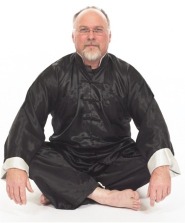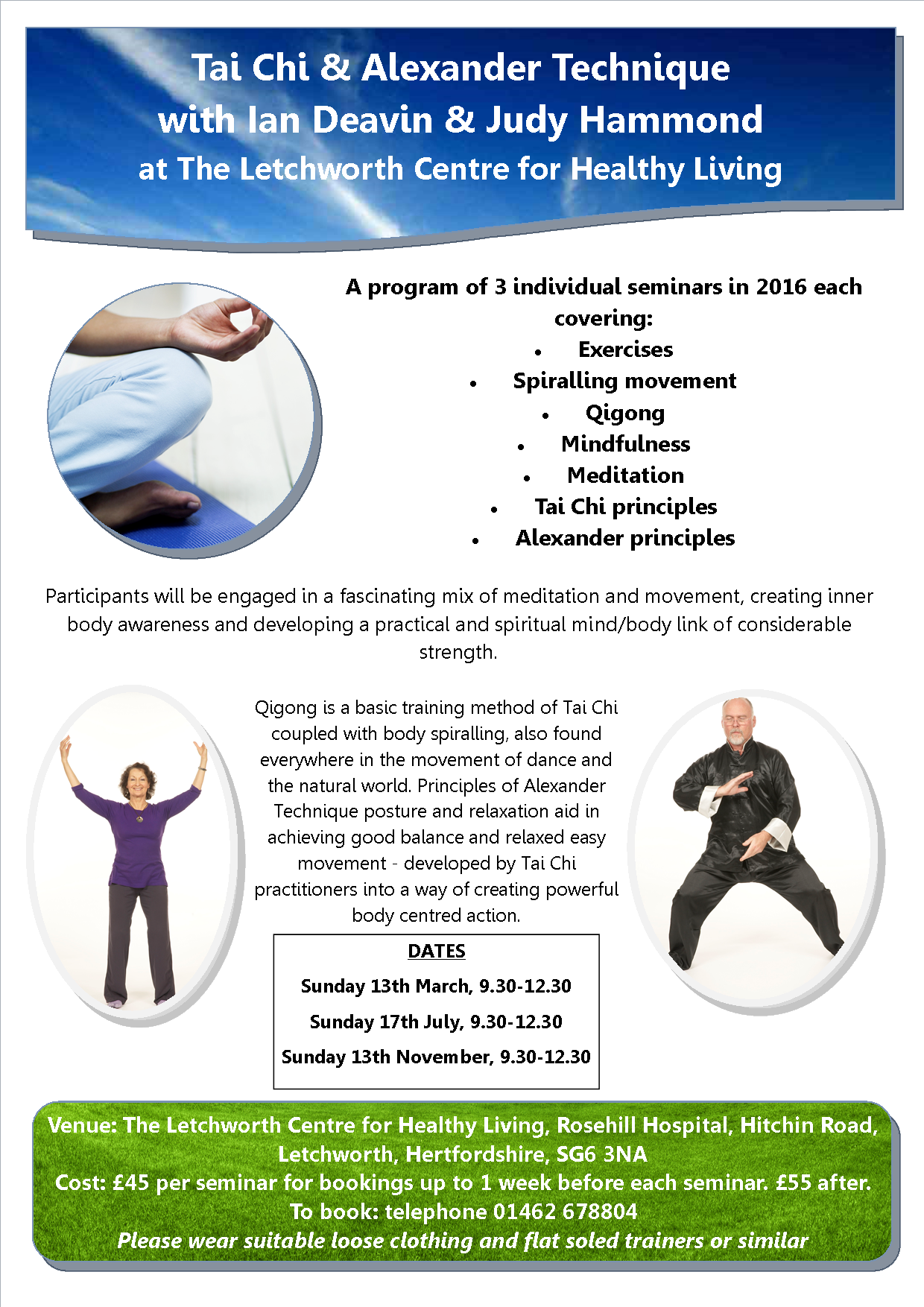

Positive daily work – chi kung
20/09/2016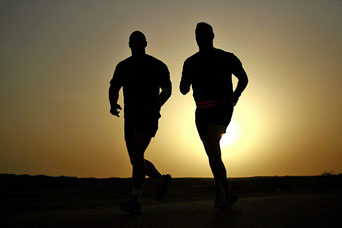
Recent research has apparently demonstrated that creativity is enhanced by mundane activity – something the Zen meditators have long suggested.
Too little activity and the mind stagnates, too much and the task overrides the creative process.
So, unsurprisingly, I get many ideas while jogging – so long as I am not too focused on competing with myself.
It makes sense then that we practice our Tai Chi in such a way that it becomes mundane as this facilitates not only observation but also the creative thought process that enables us to learn for ourselves.
An interesting simile is the idea of water – sometimes it is entirely appropriate to rush toward a goal with much left unconsidered, at other times it is good to just be still but too much rush or two much stillness results in disconnection or stagnation. Just the right amount of energy enables the water to flow gently into all the crevices without losing contact with the main body of the stream. Too much – we get disassociated eddies. Too little then no new connections can be made. Just the right flow and we can be connected and energetic – promoting creativity.
Haynes Tai Chi class
13/09/2016It has been lovely to meet the class at Haynes over the past few weeks and of course finally to say goodbye to Andy and Denise last night – good luck to them with their new Sangha House venture in Taunton.
For the moment I am looking forward to our class on Monday next week – same time – 8.00 pm, same place – The Mission Hall Haynes, same cost – similar banter!
New students are very welcome – please see here for further details.
Residential at Belsey Bridge
12/09/2016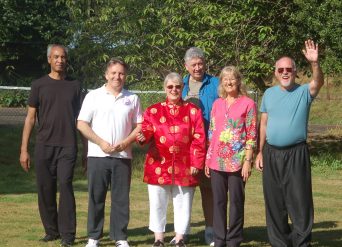
A small group of us with widely varying interest and background in Tai Chi had an interesting weekend at the Belsey Bridge Conference Centre near Bungay in Norfolk – the theme was around the whole idea of movement and how Chen Tai Chi forms and partner work can help us to develop this in a strong resilient way whatever our level of interest or ability – we focused on the principles of relaxation, movement from the centre and connectedness. This was approached by looking both at releasing the body so that it can move according to these principles – and on how the forms provide a structure to help us study use of the principles in movement with empty hand and with weapons – in this case broadswords.
There was also a good deal of socialising and some personal contemplation in the pleasant grounds of the centre and the nearby convent.
We are now looking forward to the Alternative Health Exercises weekend in May with my friend and colleague Judy Hammond – who brings her wealth of expertise and experience of Alexander Technique – along with a considerable amount of dance and other movement understanding.
Relax and feel the background noise
07/09/2016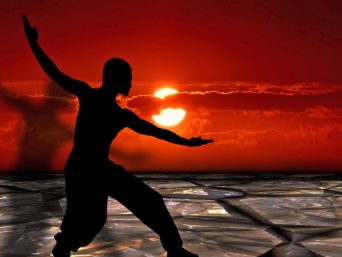
We seem to start often from a position of tension when we cannot feel much of what is going on in our bodies because it is both clamped down and swamped by the tension.
When more relaxed we begin to feel the movement of our muscles and skeleton.
Further relaxed this movement quietens and we start to feel the background internal activity of our body.
Still further on does this background also calm down leaving only the soft flow of our movement?
For those who come to the process already relaxed but unconnected, then phase 2 is probably the starting point – I don’t know, it’s just a guess, but a logical one
We are delighted that the Shefford Community Hall is to receive a make over during October – as a consequence we will be moving our Tai Chi classes to Southill Village Hall on Sunday evenings and to Campton Village Hall on Monday afternoons for the duration of October.
I look forward to seeing students in Southill and Campton during October – and to returning to a sparkly updated new Shefford hall in November!
A Western View of Chi
31/08/2016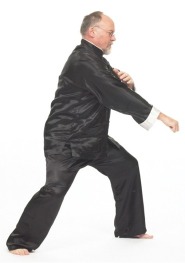
Models for training, practice and life
Many intellectual and emotional models all congruent with each other integrated in a body trained in their principles, which demonstrates the sum of those models and physical practice. Physically the ability to propagate waves through the body emanating from the centre by integrated segmental motion. This result could be considered an all-embracing model/demonstration and given a label – a model of models, a meta-model – is this description a Western version of chi?
The chi model is perhaps the external black box view – whereas all the other psychological, mechanical, biological etc. are internal. An ultimate paradox that the eastern model of the internal art is actually an external view.
Meridians
With any large and complex multi-technology system or network, e.g. electro, optical, mechanical, if one puts in a sufficiently large and broadband probe, then a readout will be achieved that represents the sum of the systems at that point and may well enable a link through the network to another probe or to specific parts of the system. It is likely that there will be patterns of such places in the network which appear linked, even though no one specific system goes directly along these pathways.
So chi may be regarded as the sum of all the systems – and in movement then chi = fluidity, grounding, centeredness, suppleness, resilience, etc. etc. If one part of the body is less integrated then power cannot be fully transmitted through it – causing a “block”.
Thus chi = breath = life = sum of all we are, and has varying facets depending on the perspective we use – e.g. physical, emotional, medical.
Thus tai chi – ultimate breath = the way of achieving maximum potential.
Tai Chi Chuan – ultimate boxing – the way of utilising our developed abilities in a fight in the best way.
The paradox is that we have to find the internal via the external.
Inner feeling is the measure we use to judge our body state but we need external help – by demonstration or manipulation to find it – or luck in identifying it and connecting the “right” feeling with powerful actions.
Our teacher can show us postures, movements, exercises with a view to our experiencing “that” feeling. The feeling itself cannot be transmitted directly so we have to go from inside our body to outside, then hope that the feeling experienced in the second body is close to that which the teacher is trying to explain. Since the feeling seems to be different for everyone and different at different stages, this becomes a recurring circle – in effect a spiral of learning. When we have identified the feeling we are looking for, then we can seek it in every movement and work with it to develop ourselves.
Change of state
What we are engaged in is creating a change of state within ourselves – i.e. changing the way our mind/body subconsciously behaves and responds to external and internal stimuli – we seek to change the way we are in the world and thus the way the world finds us in order to improve outcomes. It seems to be the change of state that is important for health, relaxation, long life, balance, speed, power etc. so that whether for health or martial arts we must first change ourselves most profoundly. Only when we have done this can we decide which aspect to focus on, with light training for health and ultimately more strenuous training to build greater strength for martial arts. Interestingly it is not a case of a once and for all change since once the direction has been changed then continuous developmental change seems to be possible almost to the very day we die.
These aspects are particularly difficult to understand from another dis-similar state, since we have great difficulty conceiving of any other way of being than that which we are used to. Especially since the training is often counter-intuitive and contrary to much mainstream thinking. The process is consequently often slow and one of gradually revealing possibilities.
By physical change of state I mean affecting the way the body actions are organised, the sequencing of muscle usage, the structural use of tendons and mechanical alignment, the sensitivity of the nervous system and the way it reacts to stimuli, the way we integrate the neuromuscular systems and the other less obvious sub-conscious internal activities. By mental change of state I mean developing a congruence of thought with external reality and our physical experience of the world, developing intellectual and emotional models on the basis of understood principles likely to lead to more positive outcomes – principles which are common across the mental/physical planes. Ultimately leading to a full integration of one’s being and realisation of self and of personal potential.
Luton classes to finish 31st August
11/08/2016Final classes in Luton at Chaul End Community Centre will be on the 17th and the 31st of August 2016 – existing students and anyone interested in Tai Chi are very welcome to come to any of my other classes in Shefford, Hitchin or Letchworth. Please see here for details or contact me for information.
Tai Chi – important behaviours
10/08/2016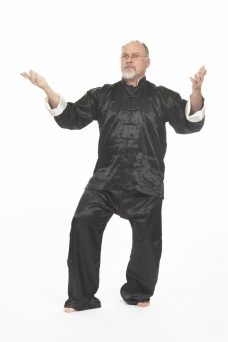
I was talking one day with a student about the behaviours that might be considered advantageous in a physical conflict – and gave him a homework project to think of a list of 5 or 6 – then to write about them – and of how they might also have positive aspects in constructive relationships.
In thinking about it later I gave myself the same task and came up with the following list. It then occurred to me that actually they are all facets of the same thing – each related to the others – labels with the same content seen from a different angle – each compliments the others – and indeed each has its positive aspect that would be a valuable behaviour in a caring/loving relationship. They are not good or bad – we get to choose the end to which we put our skills and seeing both aspects we get to make that very human choice of who we wish to be. Tai Chi simply provides a means of developing those skills and exploring their value.
They are in no particular order although I have in some cases grouped more closely related items together – the whole exercise is really about provoking thought.
In looking at the value of these behaviours in positive, caring and loving relationships we can usually look at the way the behaviour works in a negative way and do the opposite and so this is the format I have adopted in the following notes – first the behaviour – then the way it works in a destructive relationship like a fight – then the way it works in a creative relationship in italics. Both represent harmony in their own way – as so often in life – it is all about the intention – how the energy is directed.
Read the whole piece HERE
I came across this recently – it seems quite a credible piece so I thought I’d share it:
In a study recently published by the Journal of Alzheimer s Disease, it shows that in a clinical trial, Tai Chi/Taiji was proven that it actually helped seniors to grow their brain size. Improvements also were observed in several neuropsychological measures, which are indicative that the onset of the Alzheimer s disease may be delayed with Tai Chi practice.

